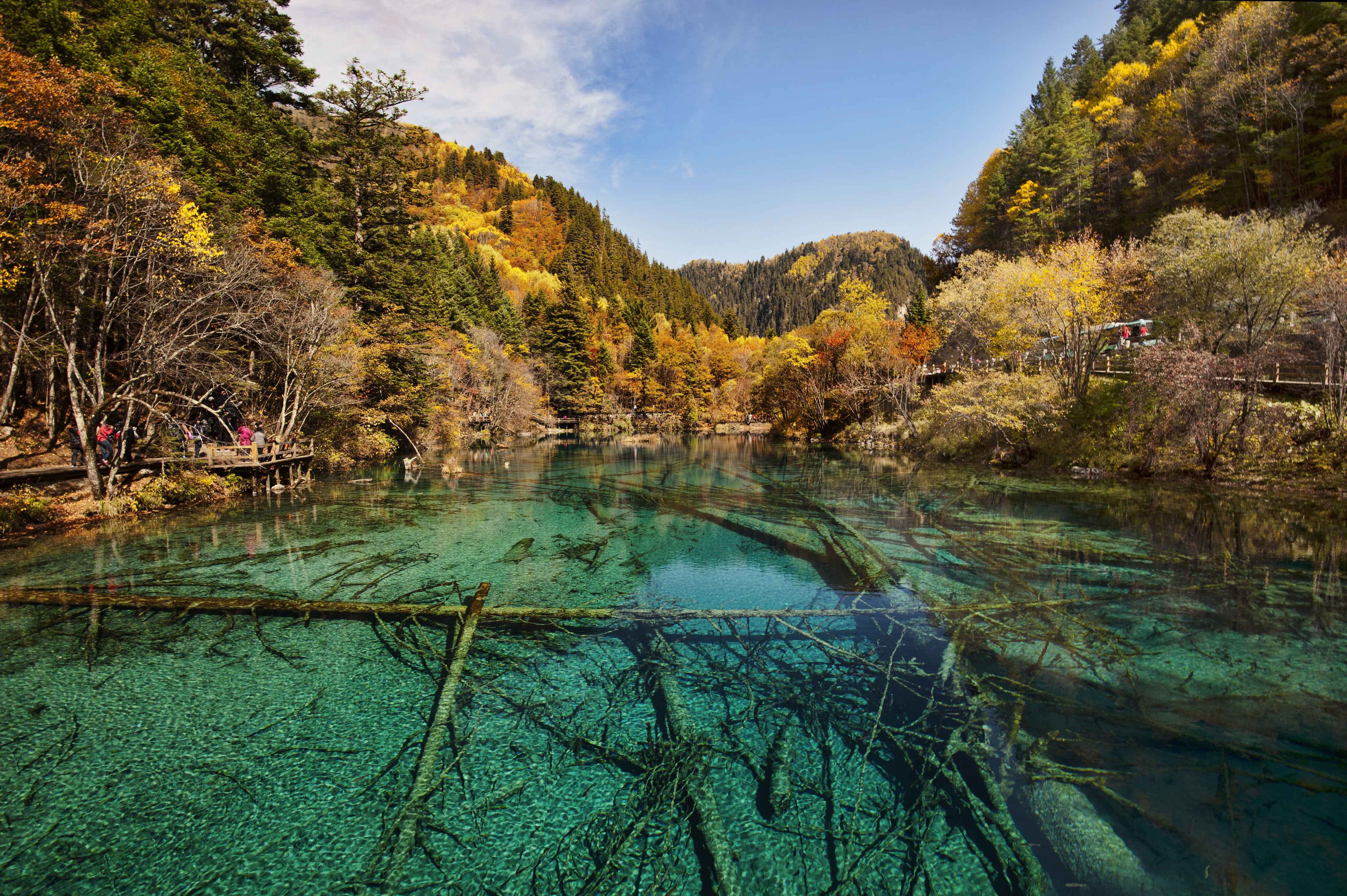
When Was Jiuzhaigou Discovered?
Jiuzhaigou, a breathtaking natural wonderland in Sichuan, China, is renowned for its vibrant turquoise lakes, cascading waterfalls, and lush forests. While the region has been inhabited for centuries, its official "discovery" is a relatively recent event.
Centuries of Inhabitation by Tibetan and Qiang Peoples
Nestled in the Min Mountains, Jiuzhaigou has been home to Tibetan and Qiang communities for generations. These indigenous groups lived in harmony with nature, their lives deeply entwined with the rhythms of the land. They developed unique cultures, traditions, and stories inspired by the natural beauty surrounding them. The name "Jiuzhaigou," meaning "Nine Village Valley," itself reflects the presence of nine Tibetan villages historically scattered throughout the region.
Despite their long-standing presence, the Tibetan and Qiang people primarily lived in isolation. The region's rugged terrain and remoteness acted as natural barriers, limiting interaction with the outside world. Consequently, the stunning landscapes of Jiuzhaigou remained largely unknown beyond these communities.
Official Discovery and Exploitation (1972-1979)
Jiuzhaigou's "official" discovery is attributed to a group of forestry workers who stumbled upon its breathtaking scenery in 1972. Recognizing the region's natural beauty, the government commissioned a survey, which further highlighted the area's ecological significance and tourism potential.
| Year | Event |
|---|---|
| 1972 | Forestry workers discover Jiuzhaigou. |
| 1972-1975 | Government conducts a survey of the region. |
| 1975-1979 | Extensive logging operations commence. |
Unfortunately, this initial discovery led to a period of exploitation. From 1975 to 1979, extensive logging operations commenced, threatening the pristine environment of Jiuzhaigou.
Conservation and International Recognition (1979-Present)
Recognizing the devastating impact of unchecked logging, the Chinese government took decisive action. In 1979, all logging activities in Jiuzhaigou were banned. Following this crucial step, in 1982, the area was officially designated as a national park, solidifying its protected status.
| Year | Event |
|---|---|
| 1979 | Logging banned in Jiuzhaigou. |
| 1982 | Jiuzhaigou National Park established. |
| 1992 | Jiuzhaigou designated a UNESCO World Heritage Site. |
| 1997 | Jiuzhaigou becomes a UNESCO Man and Biosphere Reserve. |
International recognition soon followed. In 1992, Jiuzhaigou National Park was inscribed as a UNESCO World Heritage Site, acknowledging its "outstanding universal value" and the need for its preservation. This designation further elevated the park's profile, drawing attention to its spectacular natural beauty and cultural significance. Just a few years later, in 1997, the park gained further recognition as a UNESCO Man and Biosphere Reserve, highlighting its importance in demonstrating harmonious coexistence between humans and nature.
Today, Jiuzhaigou stands as a testament to the power of conservation. The park draws millions of visitors each year who come to marvel at its colorful lakes, cascading waterfalls, and pristine forests. This once-hidden gem, cherished by local communities for generations, is now a globally recognized treasure, its future secured through conservation efforts.
Q&A
Here are some questions and answers about when Jiuzhaigou was discovered:
- Q: When did people first start living in Jiuzhaigou?
- A: Tibetan and Qiang people have lived in Jiuzhaigou for centuries.
- Q: Why wasn't Jiuzhaigou known about for so long?
- A: The area is very remote and surrounded by mountains, making it difficult to access.
- Q: What is Jiuzhaigou known for today?
- A: Jiuzhaigou is a protected national park and UNESCO World Heritage Site famous for its stunning natural beauty, including colorful lakes, waterfalls, and diverse plant and animal life.